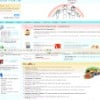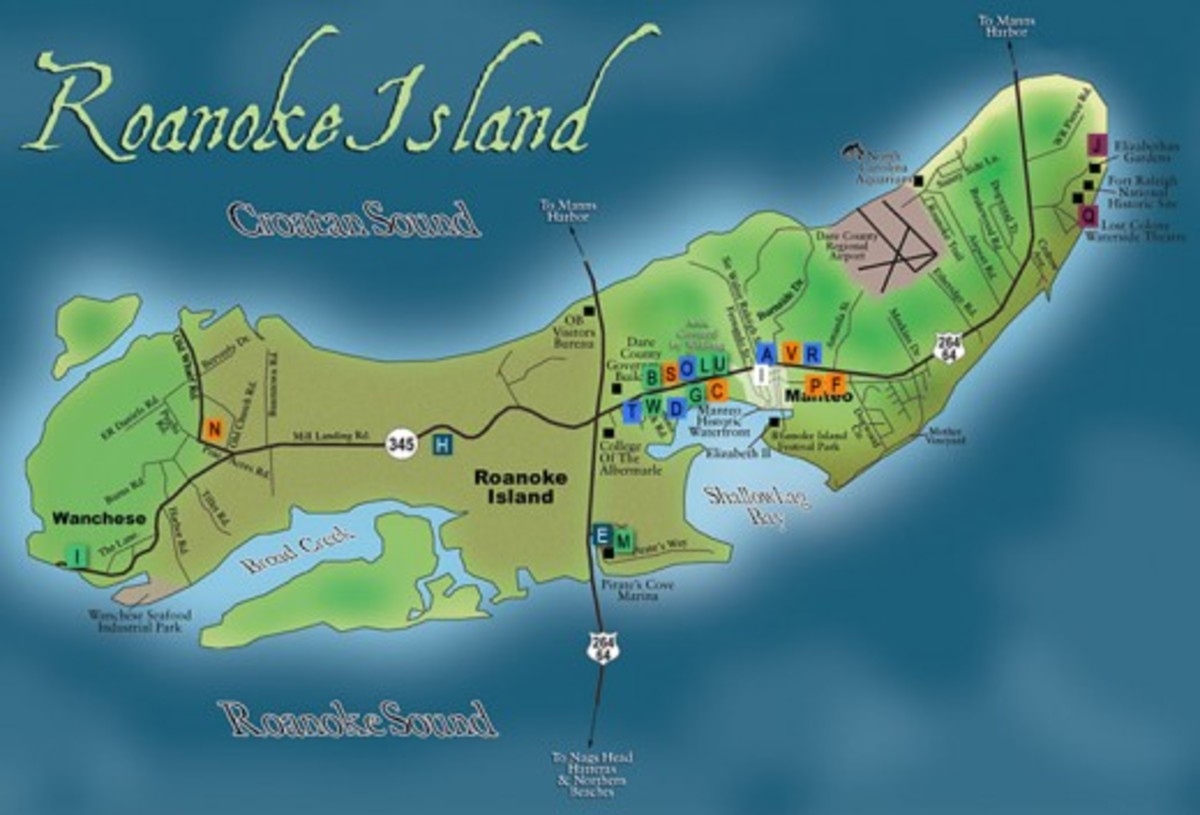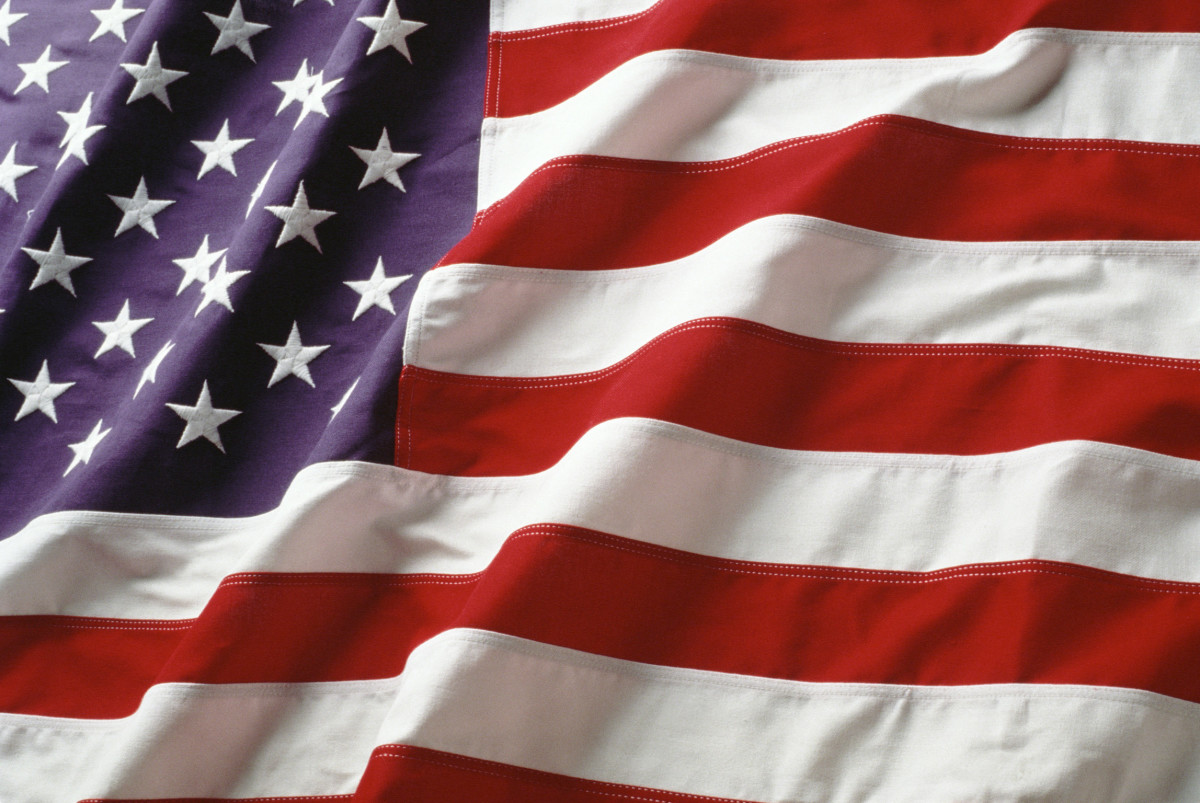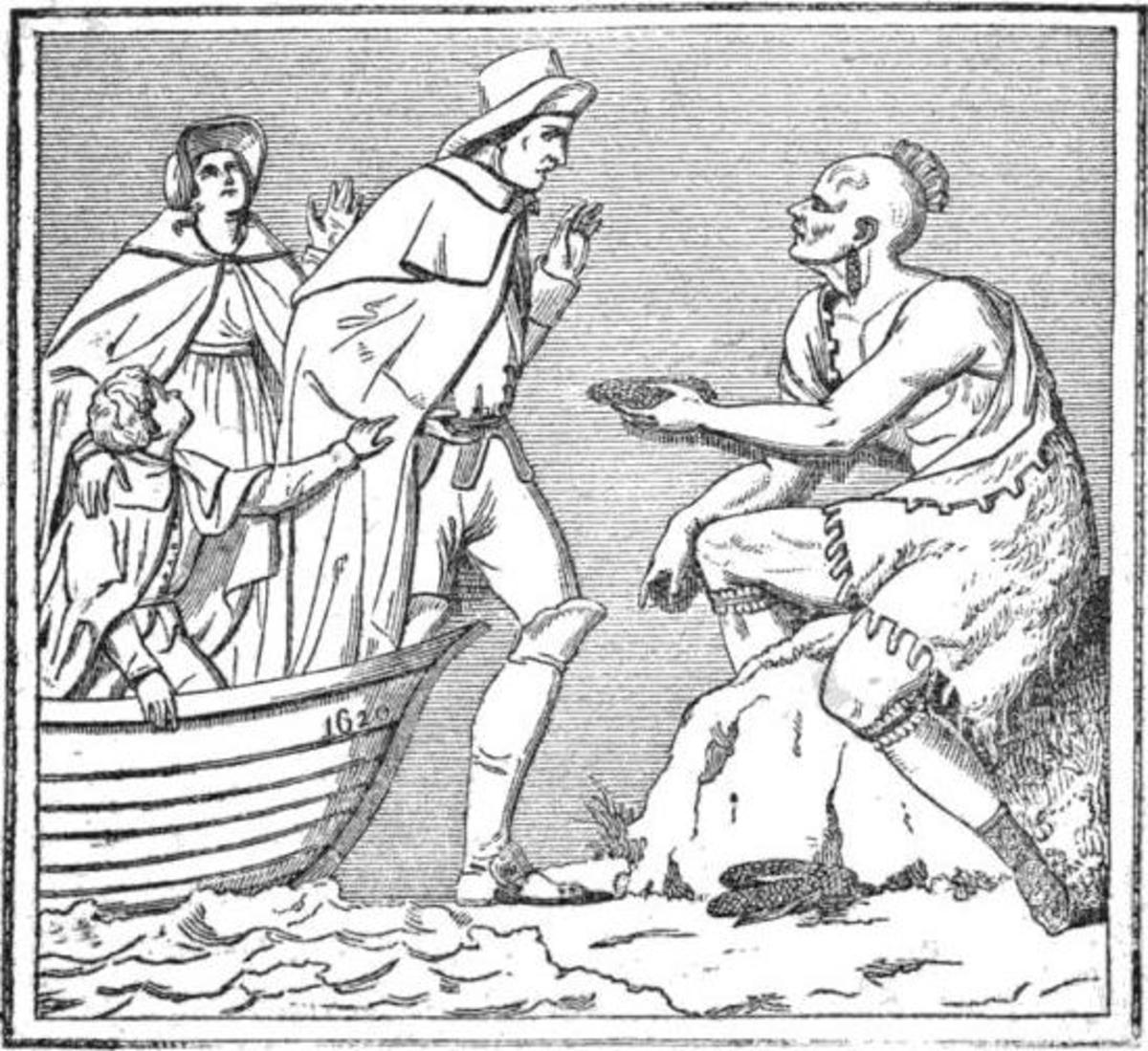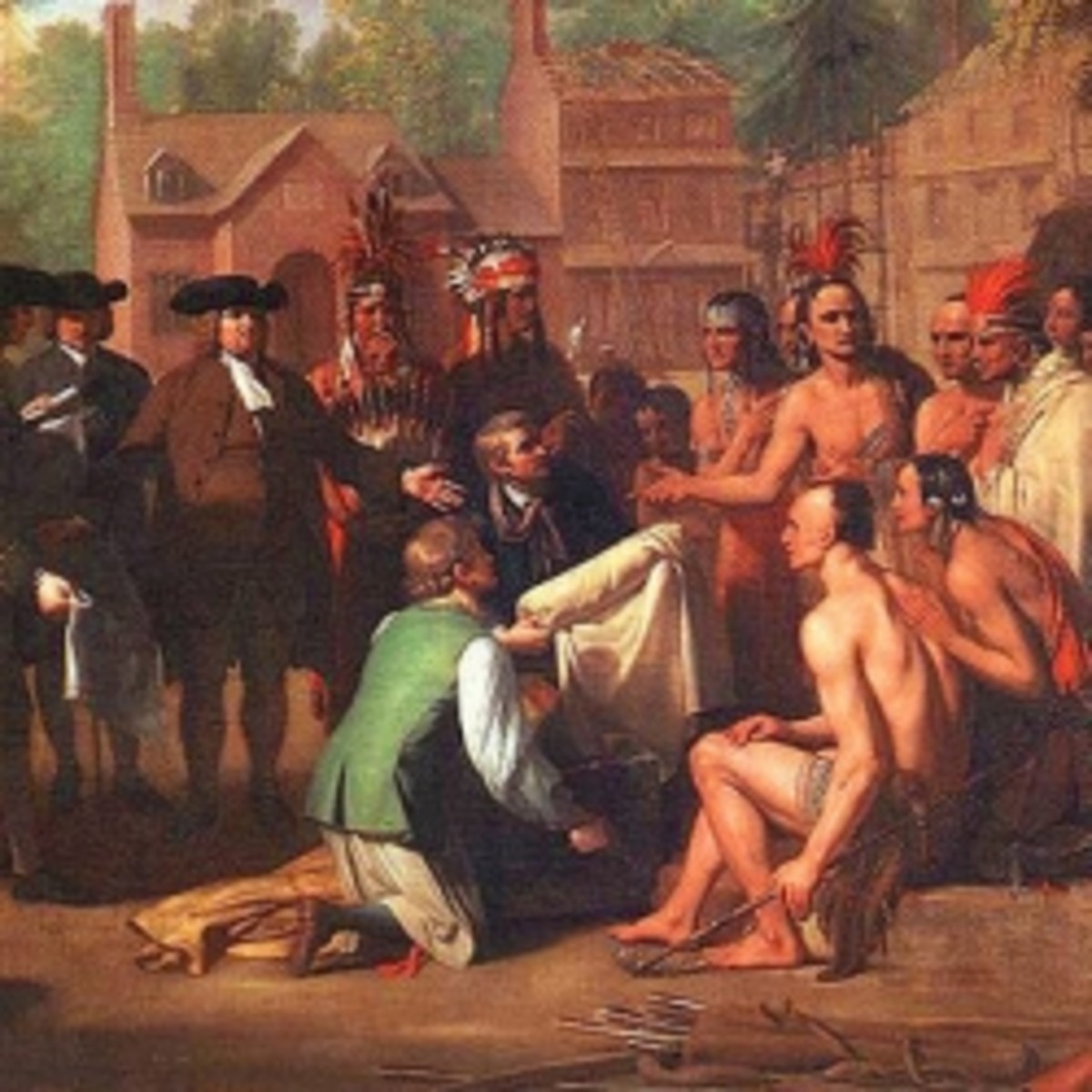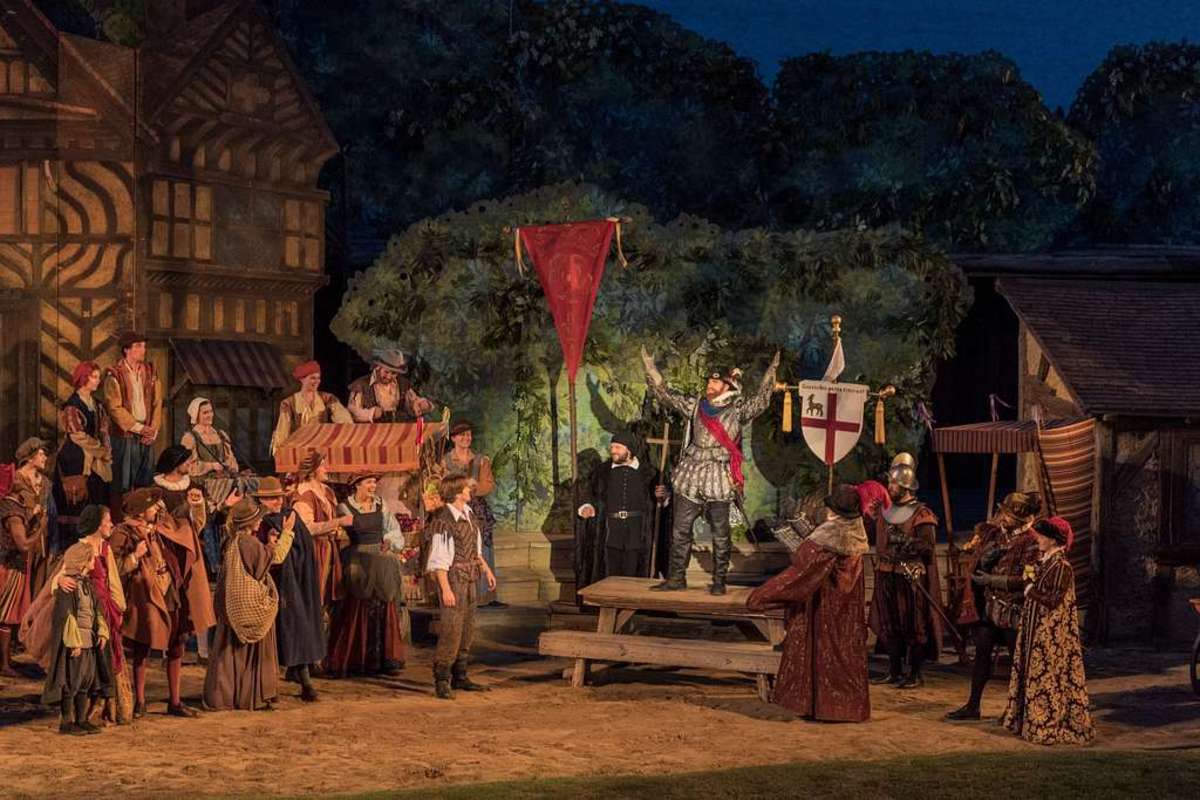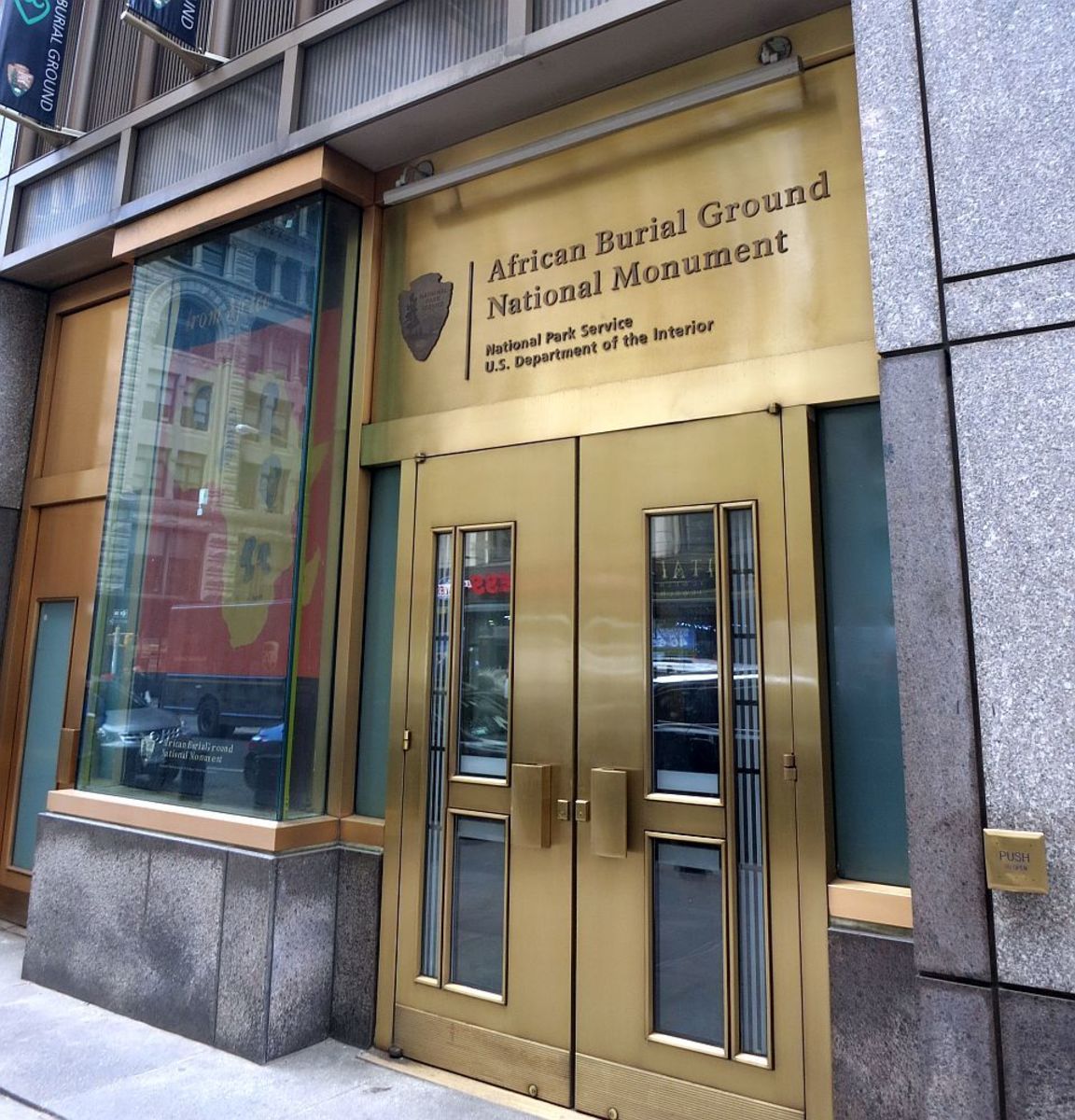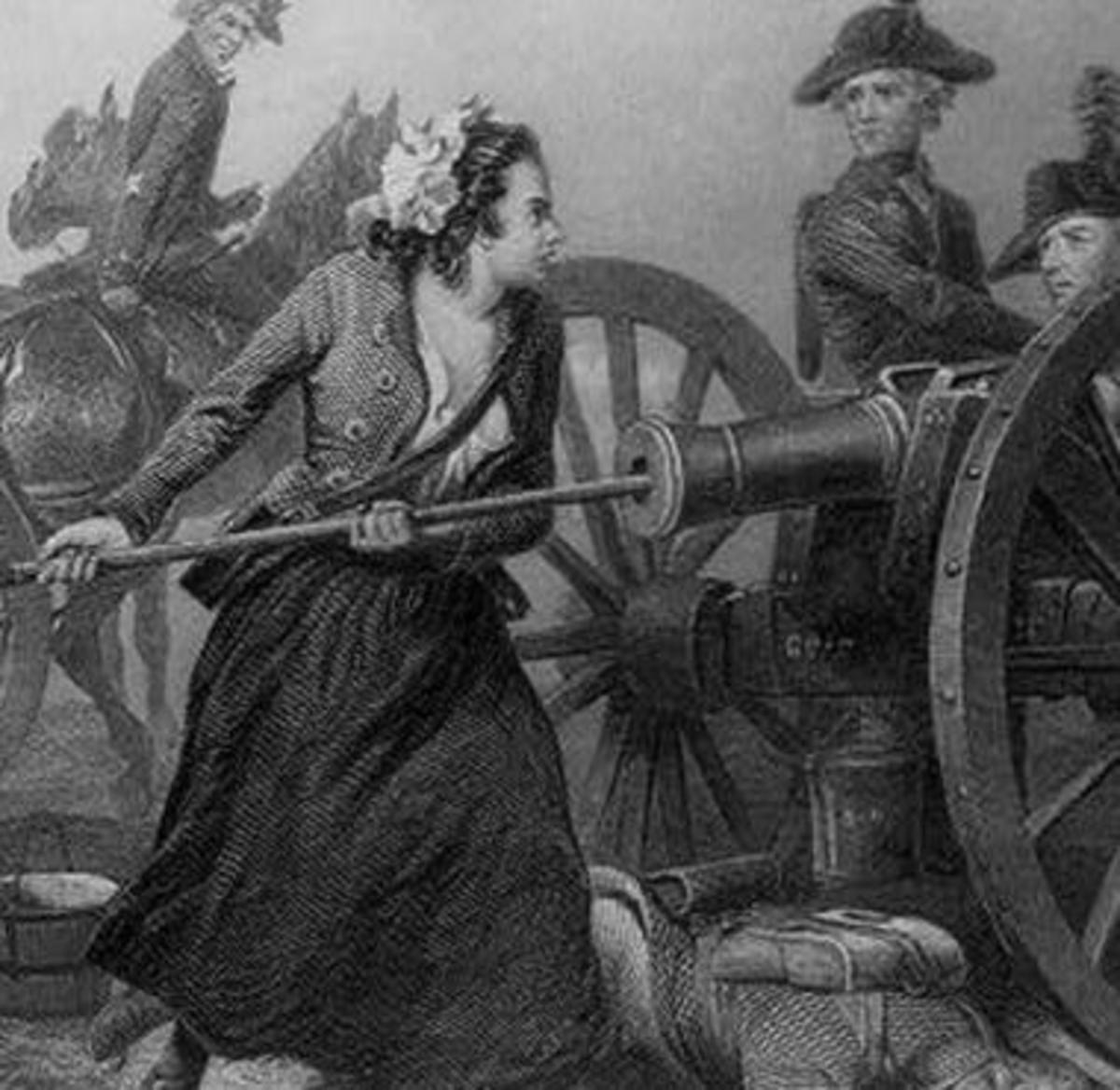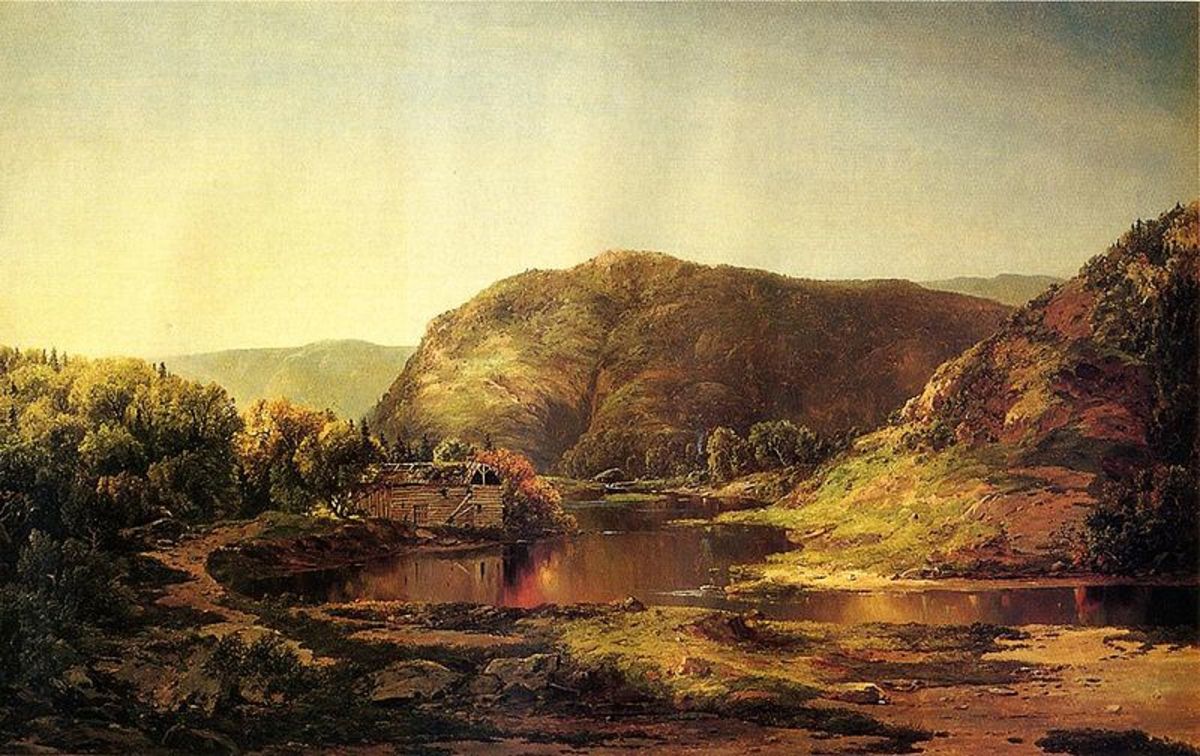- HubPages»
- Education and Science»
- History & Archaeology»
- History of the Americas»
- American History
The English Colonies
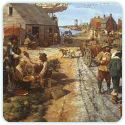
Jamestown
Nearly 100 years went by between Columbus’ crossing the Atlantic Ocean and the English settling in America. The English made their first try at settling on Roanoke Island just off the coast of North Carolina. Two times English people landed on Roanoke Island. The first group quit after about a year of hunger and disease; they went back to England. The second group simply disappeared. No one knows what happened to them. Because of this mystery, Roanoke Island has been called the “Lost Colony.”
In 1607, about 100 men and boys left England aboard three ships. They crossed the Atlantic, entered Chesapeake Bay, and headed up a river. They named it the James River. They started a small settlement, called Jamestown, along the river. They named both the river and the settlement for their King, James I.
Many of these first settlers quickly died in Jamestown. They died of hunger, Indian attacks, and diseases. More settlers came in the next few years, but almost all of them quickly died, too.
Finally, in 1612, life in Jamestown took a turn for better. John Rolfe discovered how to grow high-quality tobacco. People in Europe wanted American Tobacco, and soon tobacco was growing everywhere in Jamestown. More people came from England, trying to get rich by growing tobacco. These new settlers spread out beyond Jamestown. The tiny settlement of Jamestown was turning into the very large colony of Virginia.
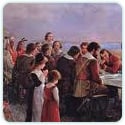
The Pilgrims at Plymouth
When Henry VIII was king of England, he got into an argument with the Pope, the head of the Roman Catholic Church. Henry became so angry that he set up his own church, the Church of England. He made everyone in England go to his church.
Some people in England did not like the Church of England. They wanted a “pure” church, and that is why they were called Puritans. Most Puritans stayed with the Church of England, trying to make it a pure church. But some Puritans decided to set up their own church. These “Separatists” were punished for trying to worship as they pleased.
In 1608, a group of separatists’ left England and went to Holland. They could worship as they pleased in Holland, but they were not happy. They had trouble finding jobs, and their children started to act more Dutch than English.
In 1620, some of these Separatists decided to go to America. They thought of themselves as Pilgrims—people who go on long journey for religious reasons. They sailed across the Atlantic Ocean on the Mayflower. After looking at a few places in America, they landed at a place they called Plymouth.
It was early winter when they landed, and the Pilgrims had to struggle to stay alive. Many of them died before spring. Luckily, an Indian named Squanto helped them. In the fall of 1621, the Pilgrims gave thanks to God for allowing them to live and for a good harvest. It was the first Thanksgiving Day.
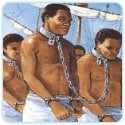
The First Slaves
The Spanish made slaves of the Native Americans they conquered. When most of the native people died, the Spanish brought in Africans to grow sugar and mine gold. Africans were slaves in Spanish America long before the English settled in North America.
It was until 1619 that the first boat load of Africans came to Jamestown. Few English settlers in America had enough money to buy the Africans. In fact, not many Africans were sold in the English colonies until after 1650. Up to that time, it made more sense for a settler to get workers from England.
A settler in America who paid for a poor person in England to cross the Atlantic Ocean got two things. First, the poor person had to work for the settler for several years to pay back the cost of crossing the ocean. Second, for every poor person the settler brought to America, the settler got 50 acres of land. The settler did not get any land for buying an African.
After 1650, American settlers could not get enough English workers. That’s when they turned to Africans to work their big tobacco plantations. The number of Africans grew quickly.
At first, the Africans were treated much like the poor people from England. After working a few years, they were set free. But by the end of 1600s, they were being treated differently from English workers. Africans were not set free, and their children became slaves, too. The long, sad era of African slavery in North America had begun.
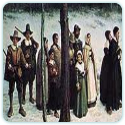
The New England Colonies
The Separatists, or Pilgrims, made up a small part of the puritans. Most Puritans did not want to leave their homes or the Church of England. But in 1630, 10 years after the Pilgrims landed at Plymouth, many Puritans finally left England for America. They wanted the freedom to worship their own way.
These Puritans set up a much larger colony than Plymouth. It was called the Massachusetts Bay Colony. The main city of the colony was Boston. Plymouth later became part of Massachusetts.
In 1636, a man by the name of Roger Williams caused trouble in the Massachusetts Bay Colony. Williams said that the Puritans had no right to settle there because the land belonged to the Indians. He also said that all people should be free to practice any religion they liked.
These ideas made Puritans very angry. They believed they had a right to the land because the king had given it to them. They also believed that the Puritan religion was the only true one. They punished Roger Williams by throwing him out of the Massachusetts. He then bought land from the Indians and started his own colony, Rhode Island. Everyone was free to worship as he or she pleased in Rhode Island.
Some Puritans left the Massachusetts Bay Colony, went south, and set up the colony of Connecticut. Other Puritans went north and set up the colony of New Hampshire. These four colonies—Massachusetts Bay Colony, Rhode Island, Connecticut, and New Hampshire—became known as the New England Colonies.
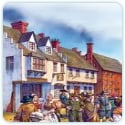
The Middle Colonies
New York, New Jersey, Pennsylvania, and Delaware were known as the Middle Colonies. They were called that because they were in between the New England Colonies and the Southern Colonies.
People from Sweden and Holland were the first Europeans to settle in this area. What we call New York was first called New Netherland by the Dutch settlers from Holland. In 1664, English ships forced the Dutch to turn over New Netherland to England. The land was given to the Duke of York and renamed New York.
The colony of Pennsylvania was started by William Penn. The king of England owed money to Penn’s father. Penn said he would take land in America as payment of the debt. What Penn had in his mind was a place where his fellow Quakers could worship in peace. The Quakers were members of a religious group called The Society of Friends. They were called Quakers because people said they actually shook (quaked) with religious feeling at their meetings.
Not just English Quakers came to Pennsylvania. William Penn advertised his new colony all over Europe. He said he would let people of all religions worship in peace in Pennsylvania. He named the capital city Philadelphia, meaning “City of Brotherly Love.” People moved to the colony from all over Europe. The many Germans who came were called “Pennsylvania Dutch.” Of all the colonies, the Middle Colonies had the greatest mixture of people of different religions and European homelands.

The Southern Colonies
The Southern Colonies were also called the plantation colonies. Virginia, Maryland, North Carolina, South Carolina, and Georgia had huge farms, called plantations. There slaves grew tobacco, rice, indigo (a blue dye), or cotton.
Virginia was the first English Colony in America. It began at Jamestown in 1607. When John Rolfe figured out how to grow sweet-tasting tobacco, Virginia settlers began planting tobacco everywhere. By the end of the 1600s, they were bringing in slaves from Africa to work on their tobacco plantations. North Carolina and Maryland also became tobacco plantation colonies.
In South Carolina, plantations in the swampy lands along the ocean grew rice. Later on, a woman named Eliza Lucas figured out how to grow indigo far away from the ocean where rice would not grow. Even later, plantations in South Carolina grew cotton.
Georgia was the last of the 13 English colonies in North America. It did not begin until 1732. Part of the reason for starting the colony of Georgia was to help poor people. Back in the 1700s, people who could not pay their debts were put in jail. Some rich Englishmen wanted to help poor people by giving them a second chance. The rich men created Georgia, where poor people could go to make a new life for themselves as farmers. At first, slavery was not allowed in Georgia. Later on, however, many slaves came to Georgia to work on the cotton plantations.
